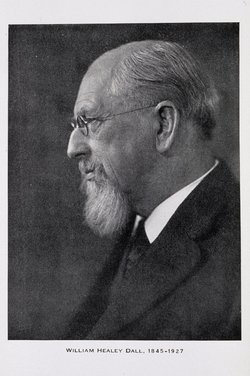 Lamarck whoms full name was:Jean-Baptiste Pierre Antoine de Monet, Chevalier de Lamarck was born
on August 1, 1744.
He became famous because of his theory of heridity:the inheritance of acquired
traits.Lamarck's own theory of evolution was in fact based on the idea that individuals adapt during
their own lifetimes and transmit traits they acquire to their offspring.
Offspring then adapt from where the parents left off,enabling evolution to advance.
This theory was later proven to be wrong.
After working on plants and writing a book on the subject,Lamarck became curator of
invertebrates,a term he coined,in the Paris Natural History Museum.
Lamarck was praised by Charles Darwin in his 3rd edition of The Origin of
Species for supporting the concept of evolution.
He died December 28th,1829.
Lamarck whoms full name was:Jean-Baptiste Pierre Antoine de Monet, Chevalier de Lamarck was born
on August 1, 1744.
He became famous because of his theory of heridity:the inheritance of acquired
traits.Lamarck's own theory of evolution was in fact based on the idea that individuals adapt during
their own lifetimes and transmit traits they acquire to their offspring.
Offspring then adapt from where the parents left off,enabling evolution to advance.
This theory was later proven to be wrong.
After working on plants and writing a book on the subject,Lamarck became curator of
invertebrates,a term he coined,in the Paris Natural History Museum.
Lamarck was praised by Charles Darwin in his 3rd edition of The Origin of
Species for supporting the concept of evolution.
He died December 28th,1829.
Some snails described by Lamarck:Pomacea canaliculata 1822,Lymnaea luteola,Aegopis verticillus 1822, Achatina immaculata 1822.
W.Swainson
 William Swainson was born on 8th October in 1789 in London
At the age of 14 he became a clerk for customs.Interest in natural history started
by studying his fathers insect- and shell-collections.
From 1816-1818 he traveled to Brazil bringing back 20.000 species of insects,1200
different kinds of plants,drawings of 160 species of fish and 760 skins of birds.
His most famous work was the second volume of Fauna Boreali-Americana (1831).
In 1841 he sailed to New-Zealand hoping to become of farmer,but his efforts
failed.So in 1851 he went to Sydney,Australia to take up the post of
Botanical Surveyor of the Victoria Government.After failing in this job too he
went back to New-Zealand in 1855 where he died on December 6th.
William Swainson was born on 8th October in 1789 in London
At the age of 14 he became a clerk for customs.Interest in natural history started
by studying his fathers insect- and shell-collections.
From 1816-1818 he traveled to Brazil bringing back 20.000 species of insects,1200
different kinds of plants,drawings of 160 species of fish and 760 skins of birds.
His most famous work was the second volume of Fauna Boreali-Americana (1831).
In 1841 he sailed to New-Zealand hoping to become of farmer,but his efforts
failed.So in 1851 he went to Sydney,Australia to take up the post of
Botanical Surveyor of the Victoria Government.After failing in this job too he
went back to New-Zealand in 1855 where he died on December 6th.
Some snails described by Swainson are:Archachatina marginata 1821,Pila globosa and Achatinella livida.
W.H.Dall
 William Healey Dall was born on August 21st in 1845 in Boston.
He would become one of the most important malacologists of the 19th and 20th century.
Beside his work on living and fossil molluscs he also contributed works in the fields
of ornithology, vertebrate and invertebrate zoology, physical and cultural
anthropology,oceanography and paleontology.
In 1862 his father,a missionary in India,brought him in contact with naturalists at
Harvard.
A year later when Dall graduated from high school he became the pupil of Louis Agassiz,
another well known malacologist,of Harvard's Museum of Comparative Zoology.
Agassiz helped Dall developing an interest in molluscs.
Dall starting to work in Chicago.There he met the famous naturalist Robert Kennicott (1835-1866)
at the Chicago Academy of Sciences Museum.
In 1865/1866 he joined an expedition to Siberia and Alaska to explore a telegraph line
route.
In 1870-1874 he went on several missions in Alaska collecting many specimens.
In 1877-1878 he conducted “the Blake Expeditions”, mounted by Major G.M. Blake, along the East Coast
of the US. The major publications on the Blake Expeditions were published in the Bulletin of the Museum
of Comparative Zoology Harvard :
William Healey Dall was born on August 21st in 1845 in Boston.
He would become one of the most important malacologists of the 19th and 20th century.
Beside his work on living and fossil molluscs he also contributed works in the fields
of ornithology, vertebrate and invertebrate zoology, physical and cultural
anthropology,oceanography and paleontology.
In 1862 his father,a missionary in India,brought him in contact with naturalists at
Harvard.
A year later when Dall graduated from high school he became the pupil of Louis Agassiz,
another well known malacologist,of Harvard's Museum of Comparative Zoology.
Agassiz helped Dall developing an interest in molluscs.
Dall starting to work in Chicago.There he met the famous naturalist Robert Kennicott (1835-1866)
at the Chicago Academy of Sciences Museum.
In 1865/1866 he joined an expedition to Siberia and Alaska to explore a telegraph line
route.
In 1870-1874 he went on several missions in Alaska collecting many specimens.
In 1877-1878 he conducted “the Blake Expeditions”, mounted by Major G.M. Blake, along the East Coast
of the US. The major publications on the Blake Expeditions were published in the Bulletin of the Museum
of Comparative Zoology Harvard :
Some snails described by Dall are:Guppya sterkii 1888,Holospira hamiltoni,Pristiloma (Priscovitrea)johnsoni 1895 and Felipponea elongata.